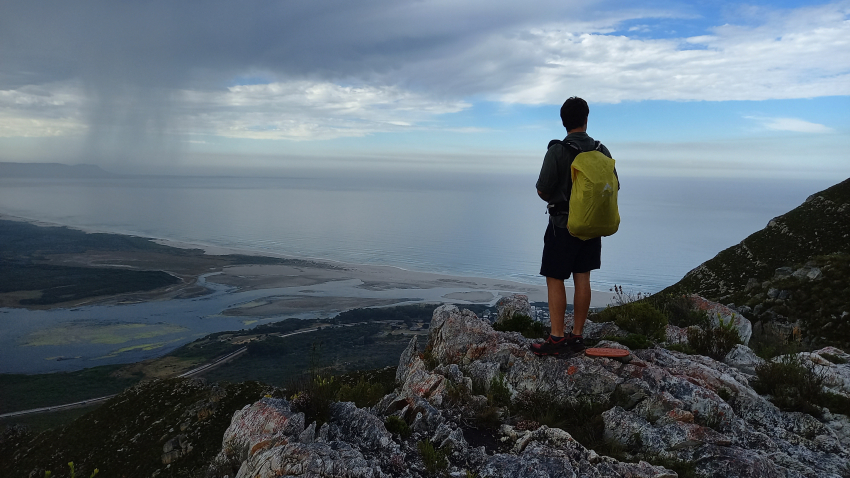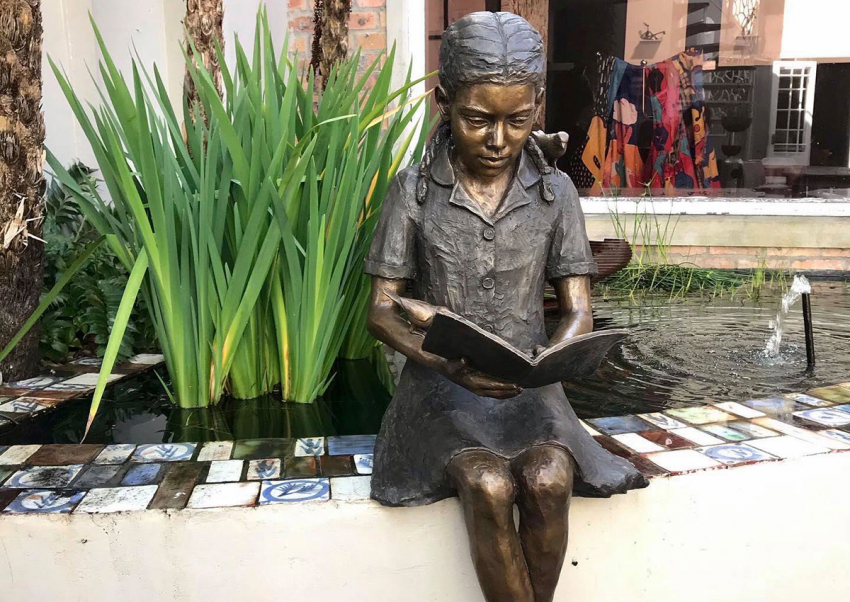JULIUS SELL OF 15 HOPE STREET
When Emile Julius was born in Oppi Koppi, Hope Street, Hermanus in1939, there were five generations on his mother’s side of the family still alive. Three generations were in Hermanus and two in Albertinia, near Mossel Bay. Julius now lives in the house where he was born, and where his grandparents also lived. The house stands on a little outcrop in
Hope Street. His father used to play in this area as a child, and they called it the koppie. His grandmother, Elizabeth van Dyk received the plot of land as a wedding gift and when they built the house, called it Oppi Koppi (On the little hill). Elizabeth’s parents (and Julius’ great grandparents) lived in High Street and owned land in Dirkie Uys and Mitchell Streets.
His grandfather Julius Sell was born on a boat from Germany. Arriving in South Africa, they first lived in Wynberg in Cape Town. When he moved to Hermanus he was a fisherman, before starting to work at the municipality. Many of the older pavements were built by him.
Building the war memorial
Not many residents are aware that Julius Sell, grandfather of Julius built the war memorial on the cliff top while working at the municipality. He also helped to build the steps to the summit of Hoy’s Koppie before the funeral of Sir William Hoy so that the coffin could be carried to the top. It had to be done in a hurry and all the fishermen helped. The war memorial was built after World War I, in 1929. According to the Old Harbour Museum, the inauguration was performed by Henrietta Poole, whose son Evered died at Ypres, Belgium in World War I.
The first guns at the monument were two German field guns captured in South West Africa during the First World War. Later they were replaced by naval guns. Being close to the sea, the old guns weathered. The wooden spokes in a wheel casing, were falling apart. Julius only remembers the first guns and how they played on them as children. The guns are facing inwards because we are not at war.
The monument was designed by a Cape Town architect and the gun shells was taken from rock piles in Hermanus. The first plaque bore the names of 11 men of Hermanus who had fallen in the first World War, and the second plaque bears a further 15 names of Hermanus residents who were killed in the Second World War. There is one exception, that of Roger Bushel who led the Great Escape. His parents were living in Hermanus at the time. Let’s hope there will not be more names added from a Third World War!
Building the new harbour
Julius’ father, Coenie Sell, was also connected with the building industry and used to drive a lorry for Mr Macedo, a builder, to cart quarried rocks from the now Zwelihle township area to the breakwater in the new harbour. During the war his father worked at the Tickey Bazaar of Mr Abel and also as a mechanic at the garage or Mr Koos Fourie (father of Lydia Geldenhuys) in the Main Road and later at Eastcliff Service Station from where he retired.
Career
Julius started work at the magistrate’s court and was transferred to the Receiver of Revenue in Cape Town after a few months. From there he was sent to Vereeniging in the then Transvaal. Then he moved to Worcester in the Cape where he worked until he was transferred to Durban. After six, years in Durban he begged for a transfer and was sent to Kimberley. These were his most enjoyable years in service. He loved the people and general surroundings, but after another six years he was yet again transferred back to Durban where he retired.
Julius who never married was in the service of the Receiver of Revenue for a total of 34 years. When his father passed away, he took early retirement to take care of his mother. He looked after her for seven years. She was bedridden for a great deal of the time. Neighbours were very kind. He was doing everything around the house and seeing to all her needs. Eventually she was hospitalised and then lived in SOFCA Frail Care, from where she was transferred to Huis Lettie Theron. She passed away shortly afterwards, ending seven years of the most unusual care of a frail old mother by her son.
In those days
As a boy, Julius was invited by a neighbour, Mr Andrew van Wijk to visit him at his place of work which was the Magnetic Observatory. There he would show the boy around to see all the interesting work which was being conducted. Julius would recall that he was shown a framed graph of the seismological disturbances that were recorded when the atom bomb was dropped on Hiroshima.
Later the Van Wijks moved to Northcliff into a house that was left to him by his friend, Mr Forbes. He had been a keen amateur astronomer and had built a hand-made telescope and installed it in a dome at the upper rear of his house. Julius was also invited to gaze at the heavenly bodies through this telescope. He also remembers that the old folks called the Magnetic Observatory, “Die Sterrehuis” (house of the stars), not knowing what was done behind the walls and not realising that it was not an astronomical observatory.
Article extracted from SJ du Toit – Whale Capital Chronicles III, Page 116.
Should you wish to use any of her stories please contact SJ du Toit directly.




























